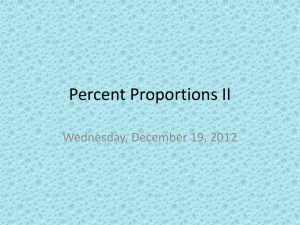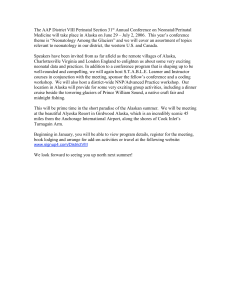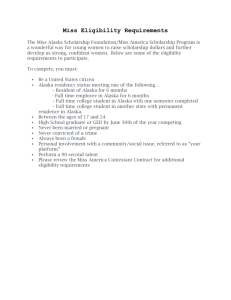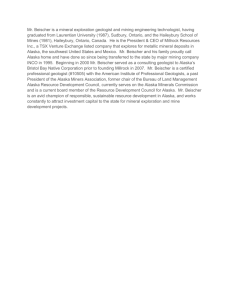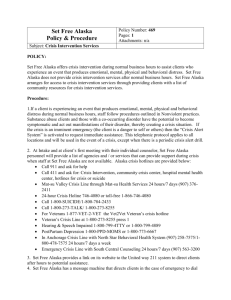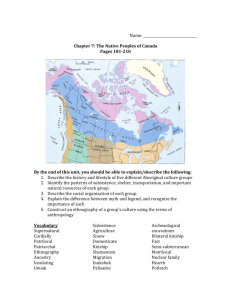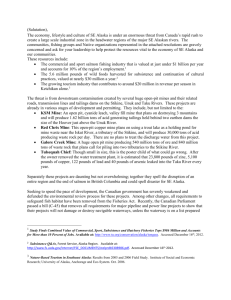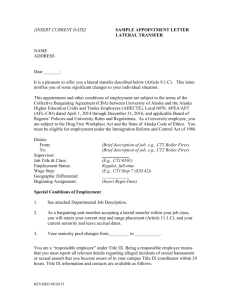Overview on issues of subsistence
advertisement
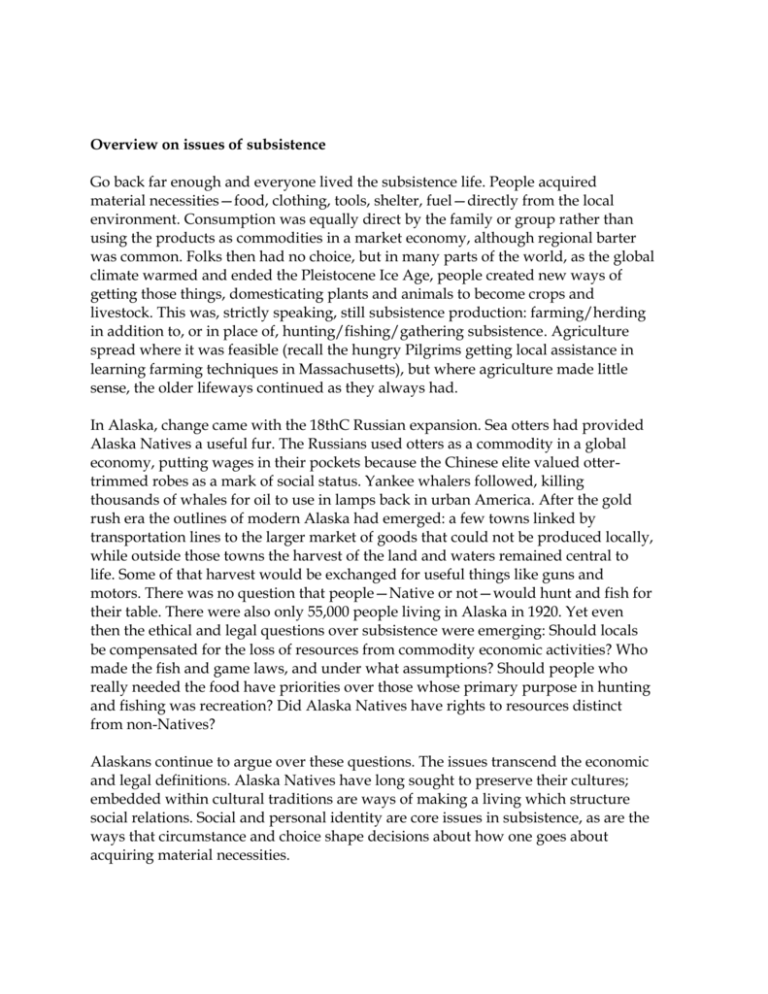
Overview on issues of subsistence Go back far enough and everyone lived the subsistence life. People acquired material necessities—food, clothing, tools, shelter, fuel—directly from the local environment. Consumption was equally direct by the family or group rather than using the products as commodities in a market economy, although regional barter was common. Folks then had no choice, but in many parts of the world, as the global climate warmed and ended the Pleistocene Ice Age, people created new ways of getting those things, domesticating plants and animals to become crops and livestock. This was, strictly speaking, still subsistence production: farming/herding in addition to, or in place of, hunting/fishing/gathering subsistence. Agriculture spread where it was feasible (recall the hungry Pilgrims getting local assistance in learning farming techniques in Massachusetts), but where agriculture made little sense, the older lifeways continued as they always had. In Alaska, change came with the 18thC Russian expansion. Sea otters had provided Alaska Natives a useful fur. The Russians used otters as a commodity in a global economy, putting wages in their pockets because the Chinese elite valued ottertrimmed robes as a mark of social status. Yankee whalers followed, killing thousands of whales for oil to use in lamps back in urban America. After the gold rush era the outlines of modern Alaska had emerged: a few towns linked by transportation lines to the larger market of goods that could not be produced locally, while outside those towns the harvest of the land and waters remained central to life. Some of that harvest would be exchanged for useful things like guns and motors. There was no question that people—Native or not—would hunt and fish for their table. There were also only 55,000 people living in Alaska in 1920. Yet even then the ethical and legal questions over subsistence were emerging: Should locals be compensated for the loss of resources from commodity economic activities? Who made the fish and game laws, and under what assumptions? Should people who really needed the food have priorities over those whose primary purpose in hunting and fishing was recreation? Did Alaska Natives have rights to resources distinct from non-Natives? Alaskans continue to argue over these questions. The issues transcend the economic and legal definitions. Alaska Natives have long sought to preserve their cultures; embedded within cultural traditions are ways of making a living which structure social relations. Social and personal identity are core issues in subsistence, as are the ways that circumstance and choice shape decisions about how one goes about acquiring material necessities. The federal government is deeply involved in protecting subsistence rights in Alaska. Although state fish and game laws have recognized differing needs between rural and urban residents, the Alaska Constitution does not recognize specific subsistence rights. With 84% of Alaska’s 650,000 residents being non-Natives, and over half of Alaskans living in “non-rural” locales, simple majority politics at the state level might tend to keep it that way. Through legislation and the courts, the federal government has sought to try to protect the rights of Alaska Natives consistent with its trust obligations to all Native Americans while not granting them sole access to resources. (There are exemptions based on race to the Marine Mammal Protection Act; hence subsistence whaling by Native villagers.) This middle path is stated in the Alaska National Interest Lands Conservation Act (ANILCA, 1980): “The continuation of the opportunity for subsistence uses by rural residents of Alaska, including both Natives and non-Natives, on the public lands and by Alaska Natives on Native lands is essential to Native physical, economic, traditional, and cultural existence and to non-Native physical, economic, traditional, and social existence.” What we eat and wear and procure, and how we get things, are fundamental to life. The issue of subsistence forces us to think about this. Doing so makes us also consider matters of history, environment, justice, economics, jobs, opportunities, states’ rights, Native rights, relations to animals, self-sufficiency, technology, and cultural identity. And probably more—it’s a big package. Readings on subsistence Blackman, Margaret. Sadie Brower Neakok: An Inupiaq Woman. Seattle: University of Washington Press, 1989. pages: ix-xi (biographical details); 180-86, “Barrow Duck-in and Subsistence Law” Alaska Natives Commission. Final Report, Volume III, “Alaska Native Subsistence” http://www.alaskool.org/resources/anc3/ANCIII.htm Case, David S., and David A. Voluck. Alaska Natives and American Laws, 2d ed. Fairbanks: University of Alaska Press, 2002. chapter 8, “Subsistence in Alaska” Alaska Federation of Natives, 2006 Federal Priorities, “Subsistence” http://www.nativefederation.org/2006FedPriorSubsistence.php Alaska Outdoor Council, AOC Views, “Subsistence” http://www.alaskaoutdoorcouncil.org/aoc_views.html#subsistence
